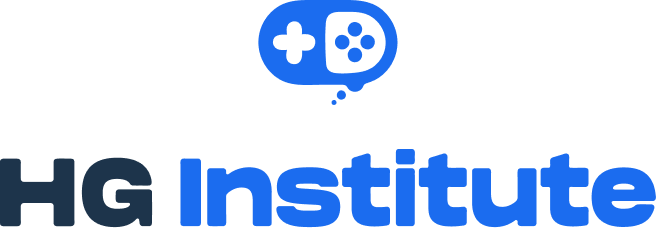Digital Wellness Coaching: A New Frontier in Mental Health Support
May 21
/
HG Institute Team
Technology has completely transformed the way we live, work, and play. It brings people and communities together across distances, opens up access to education and opportunity, and offers pathways to self-improvement that we’ve never seen before. But like any tool, it’s a double-edged sword.
Technology addiction continues to rise, and unfortunately, it has skyrocketed in the wake of the pandemic. What was once a way to enhance our lives has become a dependency that controls the user, rather than the other way around.
Technology addiction continues to rise, and unfortunately, it has skyrocketed in the wake of the pandemic. What was once a way to enhance our lives has become a dependency that controls the user, rather than the other way around.
As digital overload takes an increasing toll on mental health, people are looking for ways to break their addictive habits. This can be challenging as not only is technology deeply intertwined with every aspect of our lives, but it’s also designed to capture and keep our attention for long periods of time. This dilemma presents a timely and important opportunity for mental health coaches to help clients create a healthier relationship with technology as part of their overall mental well-being.
What Is Digital Wellness Coaching?
Digital wellness coaching acknowledges the role and impact technology has in our lives. It adds a new layer of depth to traditional coaching by addressing the realities of modern life. Digital wellness coaching helps individuals create healthy boundaries around technology and supports clients in using it more intentionally to enhance their lives rather than cause harm. It’s important to understand that it differs from general mental health coaching because it focuses specifically on challenges that arise from excessive technology use.
What’s encouraging is that digital wellness coaches aren’t starting from scratch—they’re building on a foundation already proven effective in health and wellness coaching.
Mental Health in a Hyperconnected World
The numbers are staggering. Thirty-one percent of American adults say they’re online “almost constantly” and teens get an average of eight hours per day of screen time.1 Sometimes it’s hard to know where human beings start and where technology ends.
While being hyper-connected offers humanity many benefits, our constant connectivity has also proven to have harmful effects on our mental health:
- Anxiety
- Stress
- Sleep deprivation
- Low self-esteem
- Eating disorders
- Suicidal thoughts and ideation
- Lack of focus
- Decreased productivity
Our dependency on technology shows no signs of slowing down. Social media platforms, apps, and video games are carefully engineered to keep users engaged for as long as possible. Now, even AI-powered romantic partners are gaining popularity, reflecting how deeply digital life has embedded itself into our emotional and social experiences, which shape who we are.
The Rising Demand for Tech-Life Balance
In a post-pandemic world, our reliance on technology has only intensified. Remote work has become the norm for many industries, increasing screen time and blurring the boundaries between professional and personal life. Beyond work, nearly every aspect of modern living now happens online—from shopping and food delivery to education, entertainment, friendships, and even dating.
For many, the internet isn’t just a source of convenience or mindless entertainment—it’s a vehicle through which people shape their identities, find community, and escape reality. Millennials, Gen Z, and younger generations often see their digital presence as an extension of themselves. While this connectivity can foster belonging, it also comes at a cost: burnout, distraction, anxiety, and a weakened sense of presence in the physical world. Common signs of tech-life imbalance include:
- Compulsive app checking and doomscrolling
- Zoom fatigue and digital exhaustion
- Reaching for the phone immediately upon waking
- Trouble falling or staying asleep due to screen use before bed
- Difficulty focusing or disconnecting from devices
- Anxiety from being separated from devices
- Loss of interest in offline activities or hobbies
- Memory loss
- Eye strain, headaches, or poor posture from prolonged screen time
As technology use has reached untenable levels for many, a growing awareness of its impact on mental well-being is fueling interest in digital minimalism and intentional tech use. This shift is creating new opportunities for digital wellness coaches to support clients in developing healthier digital habits, helping them manage screen time mindfully, reduce tech-related stress, and build lasting emotional resilience.
How Coaches Can Help Clients Build Healthy Digital Boundaries
While technology can be detrimental to our mental health, it isn’t inherently bad or good–what the user gets out of it depends on them. Digital wellness coaching doesn’t aim to eliminate technology use; it’s about finding ways to make it work for people, ensuring that it adds to our lives rather than detracts from them.
Coaching has already proven to help with anxiety, depression, and burnout from technology, even in specialized groups like cancer patients or youth.
In one study, health and wellness coaching enhanced patients with chronic illnesses’ confidence in managing their health, including contributing to lowered depression levels.2 In another, youth (aged 6 to 17 years old) who participated in web-based behavioral health coaching sessions showed reliable improvement in anxiety and depressive symptoms just after 2 sessions.3
So, how exactly can digital wellness coaches help clients with technology stress management? Which strategies can empower them to use it intentionally rather than compulsively checking their devices throughout the day? Everyone’s relationship with tech is different, so coaches should provide personalized plans based on lifestyle, work demands, and wellness goals.
- Identify triggers of technology addiction
To start, digital wellness coaches can work with their patients to establish what is triggering their tech overuse. Is it boredom, stress, avoidance, comparison to others, something else? By pinpointing emotional or situational triggers, clients can become more aware of their tech use and the needs it's replacing so they can start changing their behavior. - Auditing screen time and digital behaviors
Clients often underestimate their screen time. With screen time coaching, coaches can guide them through digital audits—tracking app usage, device pickups, and multitasking habits—to build clarity around their digital behaviors and their emotional impact. - Setting personalized tech boundaries
Coaches can work collaboratively with clients on screen time coaching to define realistic, meaningful boundaries. This could include:
• Phone-free zones at home
• Work/life separation. For example:
◦ No checking work emails outside the office
◦ Dedicate a physical space for just work if you work from home
• Screen-free times or days to reduce overload. For example:
◦ When waking up or going to bed
◦ During time with loved ones
◦ Specific days in the week
• Downloading apps that allow you to set time limits on social media platforms
• Putting devices far away from you when you’re sleeping, working, or having dinner with family
• Turning off push notifications - Replacing tech habits with restorative alternatives
Rather than simply removing screen time, digital wellness coaches can help clients introduce restorative alternatives that fulfill the same emotional needs in a healthier way. Examples include reading, journaling, meditation, gardening, sports, social time with friends, spa day, massage, drawing, etc. It all depends on the client’s interests and what replenishes their energy. - Encouraging mindful tech use
Digital wellness coaching emphasizes intentionality: checking in before logging on, setting a purpose for device use, and reflecting afterward. This promotes a sense of control instead of compulsion.
Clients can learn to use technology with purpose by choosing specific tools and platforms that support rather than detract from their goals and values. For example, if they’re learning a new language, they can schedule time in the day for that goal. During that allotted time, they should be intentional about only using websites or apps for language learning and completely avoid any online platforms that are unrelated to that.
This isn’t to say that clients should avoid passive technology use altogether. Using technology to decompress or escape is OK once in a while, and not for hours at a time, but their main focus should be actively using technology to enrich and enhance their lives. - Creating accountability and sustainable routines
Change doesn’t happen overnight. Progress will be up and down, which is normal when clients are trying to change behavior that’s so ingrained in their minds. Coaches can support clients with gentle accountability, regular reflection and check-ins, and incremental habit-building, helping them shift from reactive tech use to mindful engagement.
Digital Wellness Coaching is More Important Than Ever
As technology addiction continues to rise, so does the importance of digital detox and intentional technology use. In the digital age, where it’s common for people to get several hours of screen time each day, people are suffering from increased anxiety and depression, sleep deprivation, loss of focus, and other detrimental effects. These issues are felt across all ages, but technology overload is especially problematic in younger populations.
Amidst navigating this unprecedented issue–never in the history of humankind have we experienced this level of enmeshment with technology–there is a growing demand for digital wellness coaching to support clients’ overall mental well-being. Coaches should consider the role that technology plays in their clients’ mental health journeys and empower them to take back control of their devices. Help them create habits around mindful and intentional use of technology to help them achieve their goals and enrich their lives.
Remember, technology isn’t the enemy; it’s a tool. You can give your clients the power to become the masters of their tech, not the other way around.
Let's connect
Contact Us
hgisupport@hg-institute.com

Copyright © 2025
Unlock the Quest Map
Enter your email to reveal the full map of your coaching journey, skills, trials, and all.
Thank you!
Want to See If the Schedule Works for You?
Get instant access to our full course calendar—including live session dates, time commitments, and important deadlines.
Thank you!
